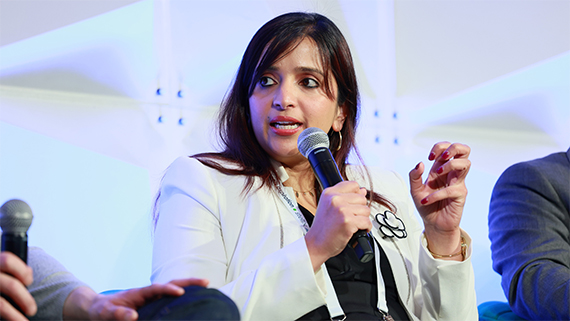
At Stellix’s Aspire 2025 event, leaders from across the life sciences ecosystem gathered to explore the promise—and challenges—of AI in transforming drug discovery, development, and delivery. One of the most forward-thinking voices on the panel was Nishtha Jain, Head of Innovation and Digital Technology at Takeda Pharmaceuticals. In a candid conversation moderated by John Seffernick, SVP of Strategy at Stellix, Nishtha unpacked what it really means to embed AI into the life science workflow—and why it’s already transforming her day-to-day work.
She added with a smile:
“We say ‘AI agents are coming,’ but look at San Francisco—autonomous taxis are already two years old. The future is arriving faster than we think.”
“Simplify AI for your people. Make it relevant to their day-to-day. That’s how you create the mindset shift—and unleash real innovation.”
John: AI is everywhere, but let’s talk reality. How is it changing your actual work at Takeda?
Nishtha: It’s not theoretical anymore. Every day, I use AI to summarize meetings, prep documents, and even predict outcomes by analyzing large knowledge sets. These aren’t moonshots—they’re productivity tools that help me focus on higher-order thinking. Across R&D, clinical trials, commercialization, and supply chain, we’re seeing opportunities to inject AI into the process to drive measurable speed and efficiency.John: AI comes with real costs—data, people, compute. How do you think about ROI?
Nishtha: We’ve shifted away from a narrow view of ROI as “return on investment.” Instead, we evaluate:
- Return on Employee Experience: How is AI improving day-to-day workflows and boosting morale?
- Return on Financials: Are we saving time and dollars through automation?
- Return on Future: Are we laying the groundwork for disruptive innovations?
John: Let’s talk AI autonomy. Are you ready to let AI make decisions independently?
Nishtha: We’re already doing that—in a controlled way. Think of AI agents that help write documents, suggest process improvements, or flag inconsistencies. But we always maintain a human-in-the-loop model, especially in regulated spaces. AI should support, not replace, critical decision-making—at least for now.She added with a smile:
“We say ‘AI agents are coming,’ but look at San Francisco—autonomous taxis are already two years old. The future is arriving faster than we think.”
John: So how do you actually get people to adopt AI?
Nishtha: Two strategies:
- Top-down commitment: Our CEO openly challenges the company to embed AI across workflows—and even jokes that his own job might not exist in five years. That kind of message sets the tone.
- Bottom-up enablement: We host forums where teams explore AI use cases relevant to their own roles. We demystify AI by making it real, relatable, and bite-sized. The goal is to shift mindsets—from fear to experimentation.
John: And the challenges?
Nishtha: Integration with legacy systems is huge. But trust is even bigger. Many users bounce back to the “old way” because they don’t fully trust the AI systems yet. So we emphasize sunsetting legacy tools as we deploy new ones—and design feedback loops so people stay engaged and confident.Final Thoughts
AI isn’t just a tool—it’s a cultural shift. As Nishtha Jain emphasized, successful adoption requires not just smarter software, but smarter strategies for change. In her words:“Simplify AI for your people. Make it relevant to their day-to-day. That’s how you create the mindset shift—and unleash real innovation.”


